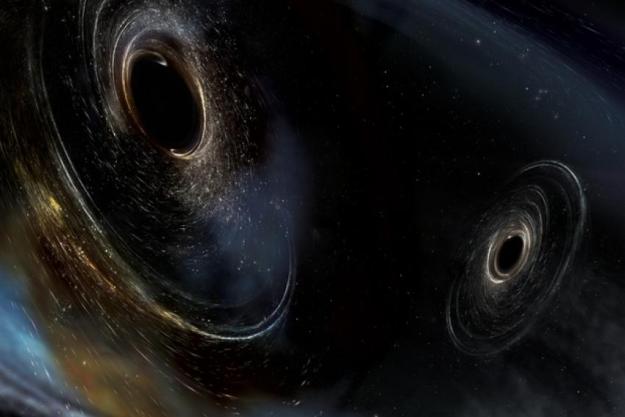As well as admiring beautiful pictures of space, you can also listen to those pictures via sonifications. These take images and translate them into eerie sounds to illustrate the wonderful and strange phenomena of our universe. NASA’s latest sonification illustrates the rings of X-rays that have been observed echoing around a black hole in the V404 Cygni system.
The sonification was made using data from NASA’s Chandra X-ray Observatory and Neil Gehrels Swift Observatory, both of which look in the X-ray wavelength. The data from the optical wavelength come from the Pan-STARRS telescope in Hawaii. Taken together, you can see how the X-ray bursts propagate outward from a central point which is the black hole. The black hole itself remains invisible, as it absorbs all light.

However, even though black holes are themselves invisible, the material around them can glow brightly. As material like dust and gas is attracted to the black hole due to gravity, it joins into a swirling disk around the black hole called an accretion disk. This material rubs together and creates heat due to friction, and can become so hot that it glows.
In the case of the black hole in the V404 Cygni system, the black hole is pulling material away from a companion star and this material produces intense bursts of energy. This radiation includes X-rays, which are shot out from the black hole and interact with the dust and gas around it. These interactions are visible as concentric rings of X-rays which are created when the black hole flares.
When listening to the sonification, you can hear the melodious sounds of background stars, with each star visible in the optical wavelength translated into a note, with the volume and pitch of the note corresponding to the brightness of the star. On top of that, you can hear the scratchy sound of the bursts of X-ray radiation forming rings around the black hole.
The sounds start in the center of the image and move outward, covering the concentric rings detected by the X-ray telescopes. If you listen closely you can hear the difference between Chandra data, which is mapped onto higher pitch sounds, and Swift data, which is mapped onto lower pitches.
Editors' Recommendations
- See incredible time lapses of two of space’s most famous objects
- Stunning image shows the magnetic fields of our galaxy’s supermassive black hole
- Scientists want your help to search for black holes
- Record-breaking supermassive black hole is oldest even seen in X-rays
- This peculiar galaxy has two supermassive black holes at its heart




